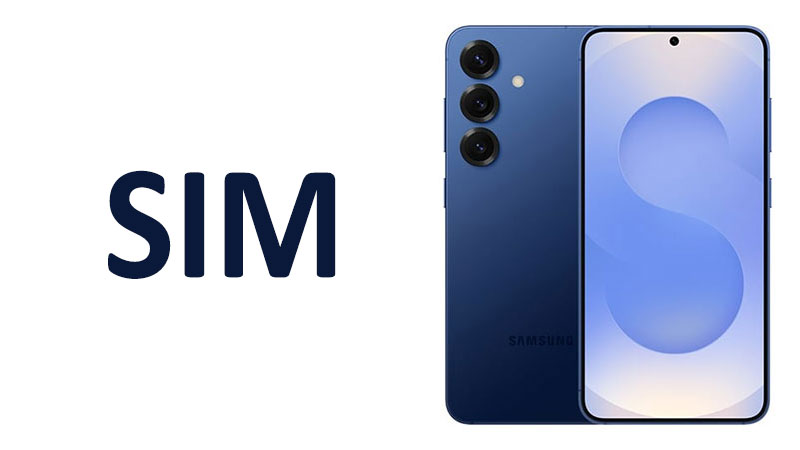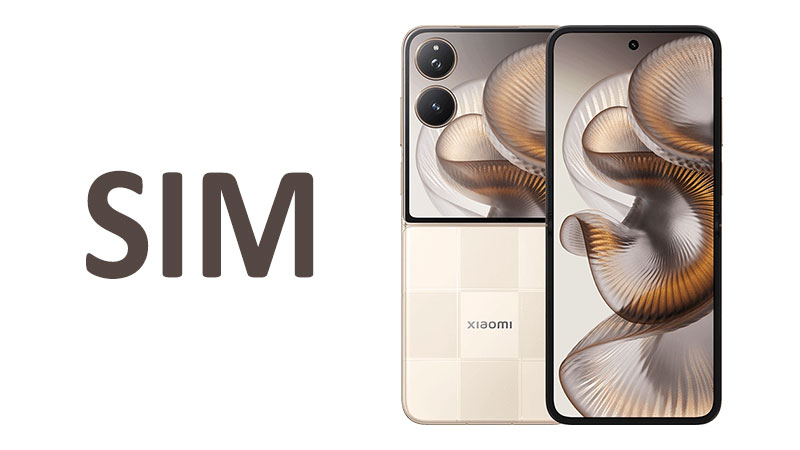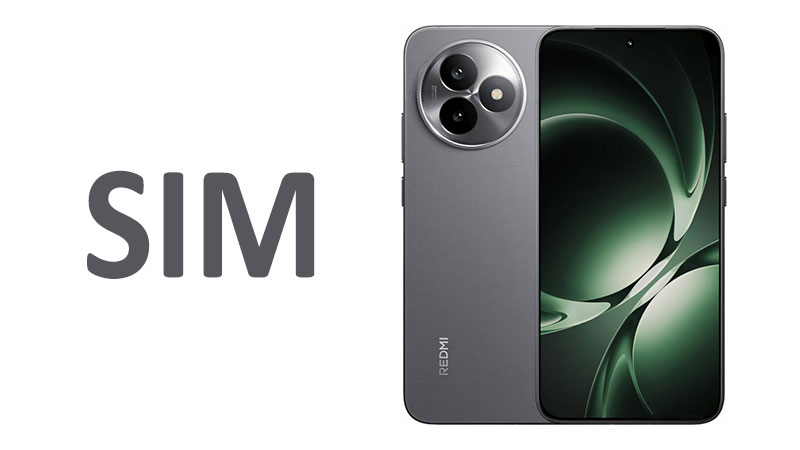The Samsung Galaxy S25 SIM and its complex connectivity architecture represent a major evolutionary step for flagship smartphones. Understanding the SIM card setup is crucial for international travelers and power users alike. This review provides a comprehensive analysis of the S25’s dual-SIM capability, eSIM integration, and advanced network technologies. The device supports a wide range of global connectivity standards. This ensures compatibility no matter where the buyer lives or travels. We will explore how different regional models handle SIM configurations. Furthermore, we will detail the cutting-edge wireless and wired networking features.
Dual-SIM and eSIM Architecture
The modern smartphone user requires flexibility. They often need to manage personal and business numbers on a single device. The Samsung Galaxy S25 addresses this need with robust dual-SIM functionality. However, it manages this capability with nuanced regional differences. All variants share one core rule. Users can activate a maximum of two lines simultaneously. This is known as Dual SIM Dual Standby, or DSDS.
Understanding the Dual-SIM, Dual-Standby (DSDS) Logic
DSDS allows the phone to monitor two separate network connections. It manages these connections using two different SIM profiles. This could be one physical Nano-SIM and one eSIM. Alternatively, it could be two eSIM profiles in some regions. The key is that both lines remain active for calls and messages. If one line is actively being used for a call, the other line is temporarily unavailable. This is a common operational limit for DSDS technology.
Nano-SIM vs. eSIM: A Brief Comparison
The Nano-SIM is the physical card most users recognize. It requires a small tray slot inside the phone. The eSIM, or embedded SIM, is a digital chip inside the device. It allows carriers to provision a number remotely. The eSIM offers greater convenience and security. It eliminates the need to physically swap tiny plastic cards. The S25’s support for both ensures maximum compatibility with global carriers.
Regional SIM Configurations Breakdown
The Samsung Galaxy S25 SIM architecture is not uniform globally. Samsung tailors the device to meet specific regional carrier demands and regulatory frameworks. Buyers must confirm their region’s specific setup before purchase. This is critical for users who rely on two physical SIM cards.
The International (INT) Quad-Option Setup
The international model offers the highest degree of flexibility. This configuration supports two physical Nano-SIM cards. It also incorporates support for two separate eSIM profiles. The official specification is Nano-SIM + Nano-SIM + eSIM + eSIM. A user can select any combination of two lines to be active at one time. For instance, a user could use both Nano-SIM slots simultaneously. They could also use two separate eSIM profiles for two different numbers. Furthermore, they could pair one Nano-SIM with one eSIM. This versatility makes the international model ideal for frequent globe-trotters.
The US Market’s eSIM-Centric Model
The United States variant leans heavily into the digital SIM future. Its configuration is specified as Nano-SIM + eSIM + eSIM. Crucially, this model only features one physical SIM card slot. US carriers have strongly pushed for eSIM adoption in recent years. This configuration allows a user to maintain a physical SIM. However, their second line must be an eSIM. The dual eSIM support ensures that users can easily switch between two digital profiles. This setup is streamlined but restricts users who prefer two physical cards.
The China-Specific Dual Physical SIM Design
The Chinese market often demands a specific, reliable dual-SIM setup. The China model supports Nano-SIM + Nano-SIM. It notably omits the built-in eSIM functionality. This preference for two physical slots is a long-standing standard in the region. It accommodates users who travel frequently between mainland China and other territories. This configuration is the most straightforward but sacrifices the convenience of eSIM technology. Buyers should understand this limitation when purchasing the Chinese model.
Specialized Comparison: S25 SIM vs. Previous Models
The S25’s regional variation strategy is similar to the Galaxy S24 series. However, the S25 solidifies the shift toward dual eSIM support in major markets. Some competitors, like Apple, completely removed the physical SIM tray in US models. Samsung’s approach maintains the single Nano-SIM tray in the US version. This provides a transition path for users who still rely on legacy networks or specific carriers. The S25 strikes a balance between embracing eSIM and retaining some physical card support.
Next-Generation Cellular Connectivity
The Samsung Galaxy S25 SIM technology is underpinned by a robust cellular platform. It supports a comprehensive array of network standards. This ensures high-speed connectivity and global roaming. The supported technologies are GSM, CDMA, HSPA, EVDO, LTE, and 5G.
The Power of Comprehensive Global Bands
Supporting GSM, CDMA, HSPA, and EVDO ensures backward compatibility. This is essential for connectivity in remote areas or developing markets. GSM and HSPA are common standards worldwide. CDMA and EVDO are vital for older North American networks. The S25 covers all these bases. This comprehensive support guarantees reliable voice and data connections globally. It minimizes the chances of being left without service.
Focusing on 5G Capability and Future-Proofing
The inclusion of 5G is now standard for flagship phones. The S25 utilizes advanced 5G technology for ultra-fast data speeds. It offers lower latency for real-time applications and gaming. The 5G implementation supports both sub-6 GHz and mmWave bands. This is crucial for accessing the highest speeds offered by carriers. Investing in the S25 ensures the phone is future-proof. It can take advantage of ongoing 5G network expansion for years to come.
Wi-Fi 7 and Advanced Wireless Networking
Beyond cellular connections, the S25 brings significant upgrades to local wireless networking. It integrates the latest Wi-Fi standard: Wi-Fi 7 (802.11be). The phone supports 802.11 a/b/g/n/ac/6e/7.
Why Wi-Fi 7 Matters for the S25
Wi-Fi 7 is the successor to Wi-Fi 6E. It offers massive speed and capacity improvements. It utilizes a wider bandwidth and sophisticated modulation techniques. This results in significantly faster downloads and uploads. It also dramatically reduces latency in congested networks. This is especially beneficial for high-resolution video streaming and cloud gaming. Users with compatible Wi-Fi 7 routers will experience a substantial connectivity leap.
Tri-Band Support and Wi-Fi Direct Features
The S25 utilizes tri-band support for enhanced performance. It operates across the 2.4 GHz, 5 GHz, and the 6 GHz spectrums. The 6 GHz band, introduced with Wi-Fi 6E, offers cleaner, wider channels. This reduces interference in crowded urban environments. Furthermore, the inclusion of Wi-Fi Direct is highly convenient. Wi-Fi Direct allows devices to connect peer-to-peer without a router. This simplifies file sharing and screen mirroring with other compatible devices.
Specialized Comparison: S25 Wi-Fi 7 vs. S24 Wi-Fi 6e
The jump from Wi-Fi 6e (found in the S24) to Wi-Fi 7 is noteworthy. While Wi-Fi 6e was fast, Wi-Fi 7 promises speeds up to four times faster. It achieves this primarily through Multi-Link Operation (MLO). MLO allows the S25 to transmit and receive data across different bands simultaneously. This significantly improves reliability and throughput. The S25’s Wi-Fi 7 capability ensures it remains a connectivity leader against older flagships.
Bluetooth and Position Services
The Samsung Galaxy S25 enhances accessory connectivity and location tracking. It features the latest Bluetooth standard and a highly accurate global positioning suite. These features are essential for modern wireless ecosystems.
Bluetooth 5.4: Faster, More Efficient Connections
The S25 utilizes Bluetooth 5.4. This is an improvement over previous Bluetooth standards. Bluetooth 5.4 is optimized for lower energy consumption. It maintains faster and more stable connections to wireless accessories. This is crucial for earbuds, smartwatches, and car infotainment systems. The A2DP profile ensures high-quality audio streaming to headphones. Furthermore, the LE (Low Energy) features maximize battery life for connected wearables.
Global Precision: The Multi-System Positioning Suite
Accurate location services are vital for navigation and many apps. The S25 supports a robust set of global navigation satellite systems (GNSS). This includes GPS, GLONASS, BDS, GALILEO, and QZSS. Using multiple systems simultaneously dramatically improves location accuracy. It minimizes the impact of signal obstructions, like tall buildings. This multi-system approach ensures precise positioning worldwide. This is a critical feature for mapping and security applications.
Wired and Accessory Connectivity
The physical connections on the S25 are just as important as the wireless ones. The device features a powerful USB Type-C port and essential accessory support.
USB Type-C 3.2: Speed, Power, and DisplayPort 1.2
The S25 features a USB Type-C 3.2 port. This port is the central hub for charging and data transfer. USB 3.2 offers significantly faster data transfer speeds than older USB 2.0. This is essential for transferring large video files quickly. More importantly, the port includes DisplayPort 1.2 support. This allows the S25 to output high-resolution video directly to external monitors. This is a key component for Samsung’s DeX desktop experience.
The Convenience of NFC and OTG Support
The S25 supports Near Field Communication, or NFC. This is necessary for secure mobile payment services like Samsung Wallet. It also allows for quick pairing with other NFC-enabled devices. The phone supports OTG, or On-The-Go, functionality. OTG allows the phone to act as a host device. Users can connect USB flash drives, keyboards, and other peripherals directly. This adds flexibility and utility to the device.
Pros and Cons of S25 Connectivity
The S25 connectivity suite offers many advantages.
- Pros of S25 Connectivity:
- It offers unparalleled regional SIM flexibility, particularly the INT model.
- Wi-Fi 7 support provides superior speed and latency for home networks.
- Bluetooth 5.4 improves accessory efficiency and stability.
- USB 3.2 enables fast data transfer and desktop-like functionality via DisplayPort.
- Comprehensive 5G support ensures long-term cellular compatibility.
- Cons of S25 Connectivity:
- The US model restricts users to only one physical Nano-SIM slot.
- The China model completely lacks the modern eSIM feature.
- The device does not include a traditional FM Radio receiver. This is a minor omission for most users.
Essential Buyer Knowledge on Connectivity
Potential buyers of the Samsung Galaxy S25 need to be aware of certain connectivity facts. These points ensure the user selects the right model and maximizes its features. Understanding the regional differences is paramount.
Verifying Regional SIM Capabilities
Buyers must verify the exact model number before purchasing. The US model is great for those who use one physical SIM. The International model is better for traveling or business users. Travelers crossing international borders often need two physical slots. Check the specific SIM tray structure of the phone you intend to buy. Do not assume all S25 models are identical in their card slots.
Managing Multiple eSIM Profiles
The S25 allows up to two eSIM profiles to be stored on the device. Users can download and save multiple profiles from different carriers. They can only use two lines simultaneously. Buyers can activate one profile and keep another one dormant. This simplifies switching carriers or adding a temporary travel plan. Mastering the eSIM manager settings is key for power users.
Maximizing Wi-Fi 7 Performance
To get the most out of the S25’s Wi-Fi 7 feature, upgrade your router. The phone’s top speeds depend on a Wi-Fi 7 compatible home network. Even on older networks, the tri-band support helps performance. However, maximum throughput requires a matching router technology. The speed benefit is most noticeable during large file downloads or high-bitrate streaming.
Utilizing USB-C for Desktop Experience
The inclusion of DisplayPort 1.2 is a major feature. It means the S25 can power the DeX desktop mode through a simple USB-C cable. Buyers should invest in a high-quality USB Type-C to HDMI adapter or cable. This unlocks the potential to use the phone as a portable computer. USB Type-C 3.2 ensures enough bandwidth for a smooth desktop experience.
Important Note on Radio Functionality
The technical specifications confirm the S25 lacks a dedicated FM Radio tuner. Users who enjoy terrestrial radio must use streaming apps. These apps require an internet connection, unlike a built-in radio. This absence is typical for modern flagship phones. It reflects the industry shift toward streaming media consumption.
Conclusion
The Samsung Galaxy S25 SIM and connectivity features position it as a globally versatile device. Its architecture is robust and forward-thinking. The regional SIM variations—especially the three different models—serve distinct user needs. The International version offers the ultimate flexibility with dual physical SIM and dual eSIM support. This is critical for maximizing choice.
The adoption of Wi-Fi 7 future-proofs the device for next-generation home networking. Furthermore, the USB Type-C 3.2 port provides excellent speed and display capabilities. The comprehensive 5G and GNSS support ensures high-speed access and accurate navigation worldwide. Buyers must carefully choose the correct regional variant based on their SIM requirements. The S25 is a connectivity powerhouse built for the future.
Frequently Asked Questions (FAQ)
1. How many SIM cards can I use at the same time on the S25?
You can use a maximum of two active lines simultaneously. This can be two physical Nano-SIMs or a combination of Nano-SIM and eSIM, depending on the model you own.
2. Does the US version of the Samsung Galaxy S25 support two physical SIM cards?
No, the US model supports only one physical Nano-SIM card. The second line must be provisioned digitally using one of the available eSIM profiles.
3. What is the benefit of the S25 having Wi-Fi 7 instead of Wi-Fi 6E?
Wi-Fi 7 is significantly faster than Wi-Fi 6E. It offers higher throughput and lower latency. This is achieved through wider channel usage and the new Multi-Link Operation technology.
4. Can the Samsung Galaxy S25 connect to an external monitor for a desktop experience?
Yes, the S25 supports DisplayPort 1.2 via its USB Type-C 3.2 port. This enables the use of the DeX desktop mode on an external display with a compatible cable.
5. Why is the SIM setup different for the Chinese model of the Galaxy S25?
The Chinese model features two physical Nano-SIM slots but does not support eSIM. This configuration aligns with long-standing market preferences and carrier standards in that region.



